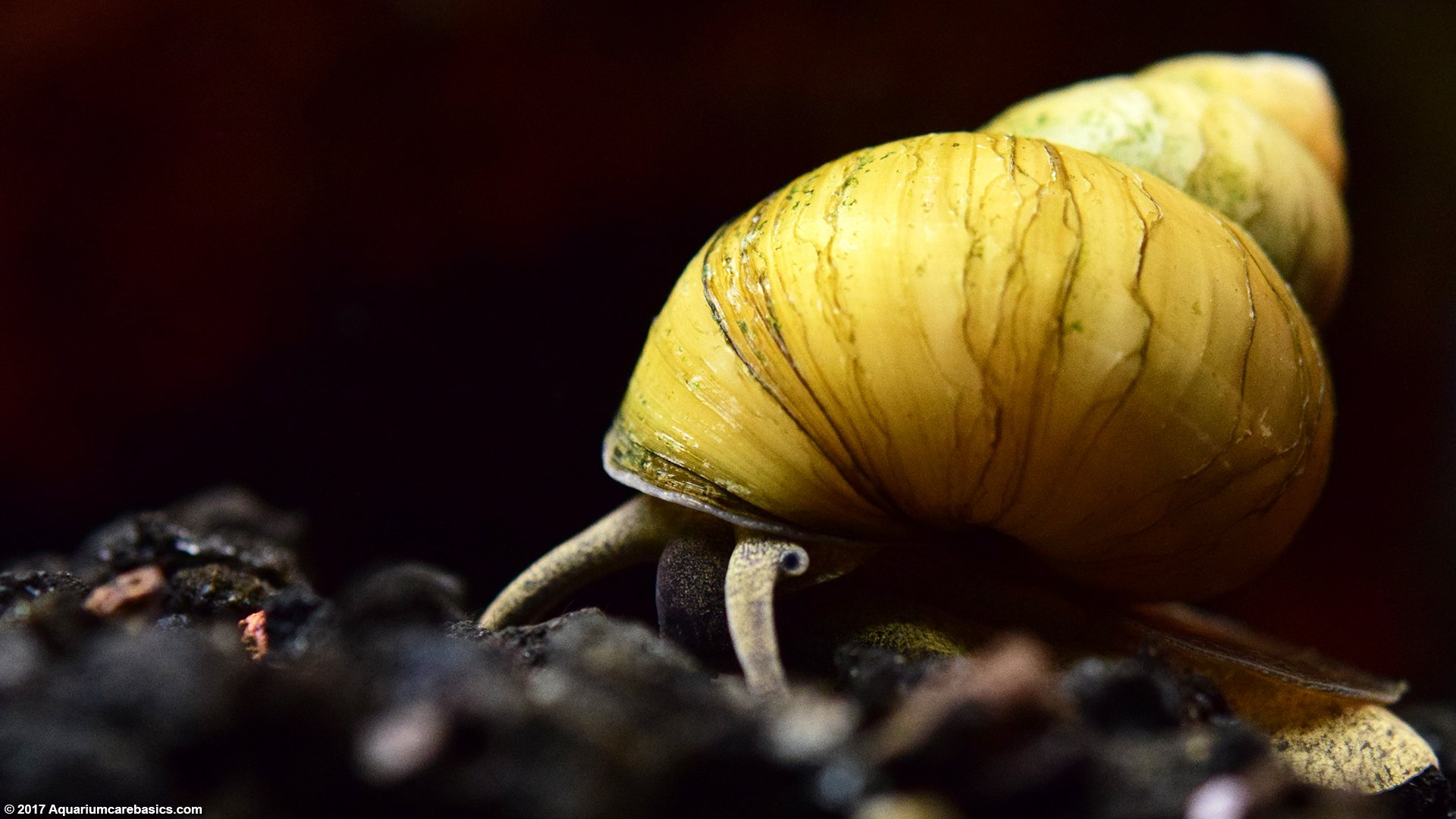
Whereas some snail species will view your pond plants as a tasty treat, Japanese Trapdoor snails do not eat plants and instead stick to the nasty stuff that you want out of your pond. They are live-bearing snails and only breed twice a year. And what is more, they are not hermaphroditic. These critters can handle pH fluctuations anywhere from 6.5 to 8. They are hardy enough to overwinter in more extreme climates. Also known as the Chinese Mystery snail, they can get to be 2 to 3 inches when fully grown. The most regularly recommended pond snail for the job is the Japanese Trapdoor snail, or Viviparus malleattus.

Others may attack pond plants or prefer the beneficial algae that helps to keep the water parameters in check, while skipping the type that can lead to lowered oxygen levels or green water-causing planktonic algae blooms that limit visibility in a pond. Many types of snails are hermaphrodites, meaning they can reproduce without mating. Some that rapidly produce offspring can become a nuisance. There are numerous species of snails that are indigenous to different regions. Although they do have a role in helping to keep the water clear, they will not eat the blue-green algae that are the real source of irritation to koi keepers, not to mention a danger to the koi. Some even claim that by stirring up sediment, they will release some nitrogen. They will also feed on organic debris like uneaten fish food, leaves or other detritus that falls to the bottom of the pond. Some snails will simply migrate to your pond from another area. Snails can be introduced into a pond’s ecosystem by visitors like turtles or an aquatic plant that is brought in. Snails of all kinds can find their way into your koi pond by hitchhiking a ride on the back of another animal or even a plant. Snails, some of the more omnipresent helpers, can end up in your pond without you even knowing it. Believe it or not, even Aeromonas has its own helpful qualities.īeyond that, there are a number of little helpers that koi keepers can lean on, even in a small way, to help swing the balance of clear water in favor of their “living jewels.” These pond helpers may be small, but they can be quite helpful in keeping in check some of the stuff that can drive a koi enthusiast crazy.

Sometimes, this assistance comes from the most unlikely of sources. It is a labor of love for many koi fans, but a little help from time to time is greatly appreciated. Pond and koi keeping often can require a lot of time and labor.


 0 kommentar(er)
0 kommentar(er)
